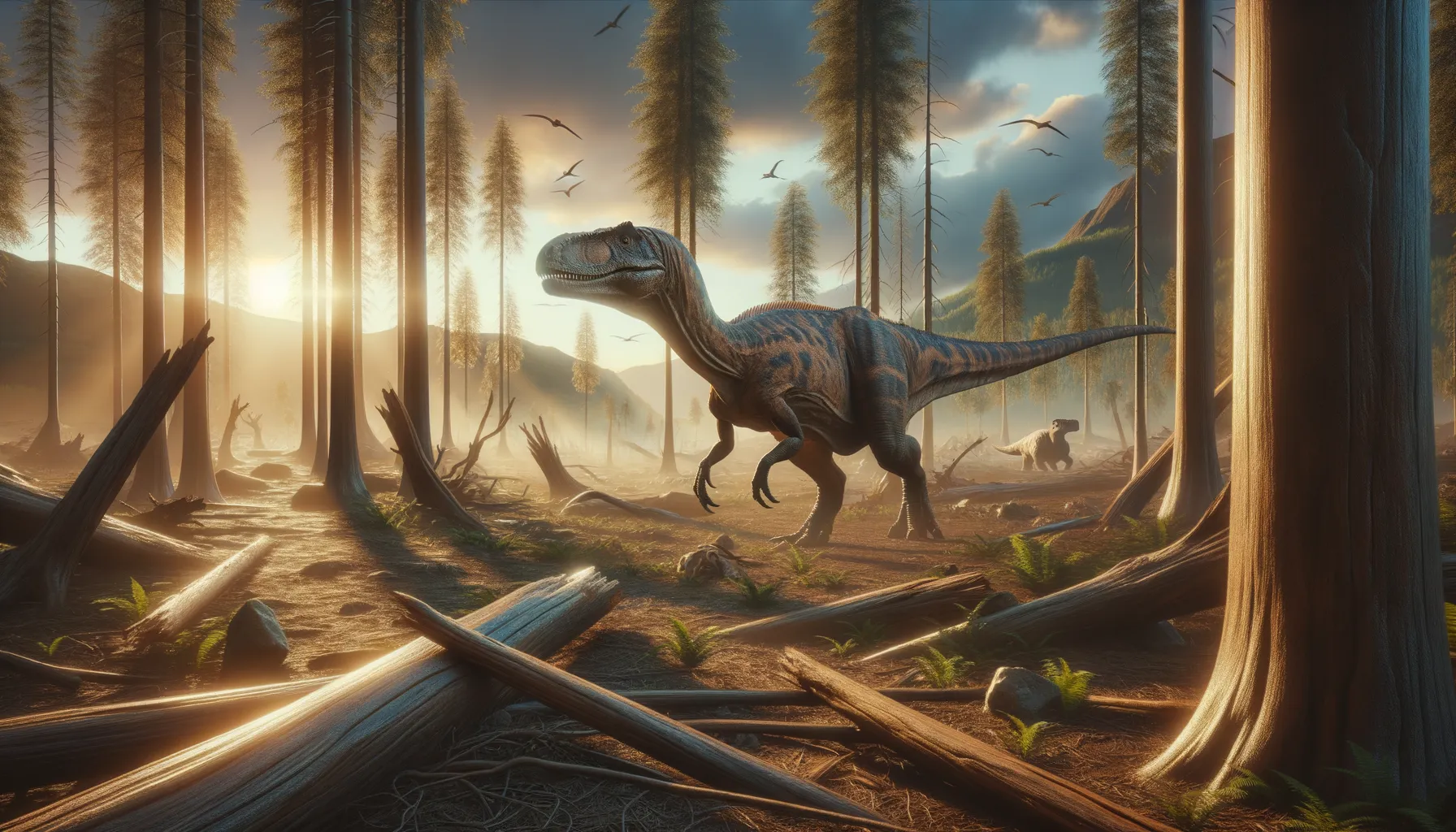
Dolichosuchus
Speedy predator of the ancient world.
Period
Triassic
Length
Roughly 6.5 meters in length.
Height
About 1.5 meters tall at the hips.
Weight
Estimated around 200 to 500 kilograms.
Dolichosuchus was a carnivorous dinosaur from the Triassic period known for its elongated body and lightweight structure. It exhibited features that suggest it was a swift predator, likely preying on smaller animals. Though not as massive as some later dinosaurs, it was still an impressive creature of its time, indicative of early theropod evolution.
Diet
Dolichosuchus was a carnivore, primarily feeding on smaller reptiles and possibly early mammals. Its diet likely consisted of anything it could overpower, taking advantage of its speed to catch prey.
Hunting
With keen senses and swift movements, Dolichosuchus would have been an active predator. It relied on speed and agility to surprise its prey, using its lightweight body to maneuver quickly.
Environmental challenges
Living in the Triassic period, Dolichosuchus faced a dynamic and competitive environment. It contended with varying climates and a range of other predators. The shifting landscapes required adaptability to survive, with resources sometimes scarce, prompting competition with other carnivores.
Speed
Likely swift for its size, able to run quickly.
Lifespan
Estimated average lifespan of about 20-30 years.
First discovery
Discovered in Germany in the early 20th century.
Fun Facts
- Dolichosuchus was a dinosaur from the Triassic period, which lived about 230 million years ago.
- The name Dolichosuchus means 'long crocodile', reflecting its elongated body shape.
- Fossils of Dolichosuchus have primarily been found in Europe, with some remains discovered in Germany.
- This dinosaur was relatively small compared to others, measuring only about 3 meters in length.
- Dolichosuchus is believed to have been a fast and agile predator, using its speed to catch prey.
- Scientists think that Dolichosuchus was an early representative of the group that eventually led to the evolution of larger dinosaurs.
- Although not as well-known as other dinosaurs, Dolichosuchus provides important insights into the early diversification of archosaur reptiles.
Growth and Development
Dolichosuchus likely experienced rapid growth during its juvenile stages, an adaptation for survival. Fossil evidence suggests that it reached maturity relatively quickly, which may have helped it evade predators. Juveniles probably stayed close to cover for protection.
Habitat
This dinosaur inhabited floodplains and forested areas, benefiting from the diverse ecosystems. The varied terrain provided cover and hunting grounds. Water bodies nearby might have been crucial for hydration and supporting prey species.
Interaction with other species
Dolichosuchus likely coexisted with other dinosaur species, both as a predator and a competitor. It had to carefully navigate its interactions with larger carnivores. Cooperative behaviors were uncommon, as competition for food often overshadowed them.
Natural lifespan
Its natural lifespan was around 20-30 years in the wild.
Reproduction
Reproduction likely involved laying eggs in secluded areas. It is assumed that they exhibited some form of parental care, possibly guarding nests against scavengers. Little is known about specific mating behaviors due to scant fossil records.
Social behaviour
Dolichosuchus may have been a solitary hunter, with little evidence suggesting pack behavior. Interactions with others were probably limited to competition over resources. Solitude would have provided increased stealth and a personal strategy for survival.
Fossil locations
Fossils of Dolichosuchus have mainly been found in Germany. The discoveries there provide valuable insights into the fauna of the late Triassic period. These sites are crucial for understanding early dinosaur evolution, showcasing the diversity of prehistoric life.
